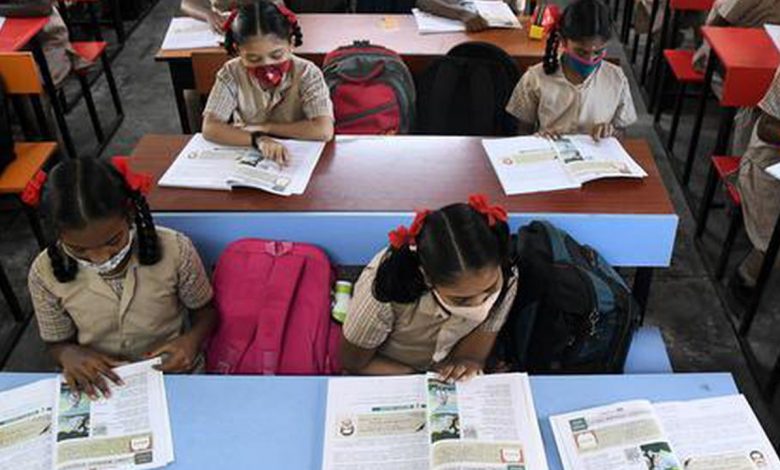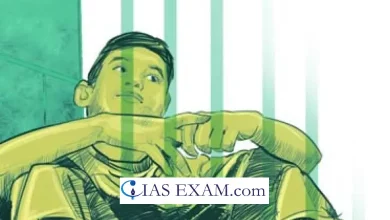
Context – The Non-Government Organization Pratham released the Annual Survey of Education Report (ASER) 2022, which is ots first full-fledged report after the COVID-19 pandemic.
This is an annual survey that aims to provide reliable estimates of children’s enrolment and basic learning levels for each district and state in India. It has been conducted every year since 2005 in all rural districts of India and is the largest citizen-based survey in the country.
Conduct of the Survey
- The ASER is the annual source of information on children’s learning outcomes available in India and the survey is usually done once in every two years.
- ASER tools and procedures are designed by ASER Centre, the research and assessment arm of Pratham. The survey itself is coordinated by ASER Centre and facilitated by the Pratham network. It is conducted by close to 30,000 volunteers from partner organizations in each district.
- All kinds of institutions partner with ASER: colleges, universities, NGOs, youth groups, women’s organizations, self-help groups, and others. The ASER model has been adapted for use in several countries around the world: Kenya, Uganda, Tanzania, Pakistan, Mali, and Senegal.
Assessment Parameters
- Unlike most other large-scale learning assessments, ASER is a household-based rather than school-based survey.
- This design enables all children to be included – those who have never been to school or have dropped out, as well as those who are in government schools, private schools, religious schools or anywhere else.
- In each rural district, 30 villages are sampled. In each village, 20 randomly selected households are surveyed.
- Information on schooling status is collected for all children living in sampled households who are in the age group 3-16.
- Children in the age group 5-16 are tested in basic reading and basic arithmetic. The same test is administered to all children.
- The highest level of reading tested corresponds to what is expected in std 2; in 2012 this test was administered in 16 regional languages.
- In recent years, this has included household size, parental education, and some information on household assets.
Key Highlights of ASER 2022
The ASER 2022 report, which surveyed 6.99 lakh children aged 3 to 16 across 616 rural districts, however, bears some good news. School-level enrolment continues to grow strong and fewer girls are now out of school.
- Enrolment:
- India has recorded a 95% enrolment for the past 15 years in the 6-14 years age group.
- Despite the pandemic forced school closure, the figure rose from 97.2% in 2018 to 98.4% in 2022. Only 1.6% of children are not yet enrolled.
- There is a clear increase in government school (6-14) enrollment across states — it rose from 65.6% in 2018 to 72.9% in 2022.
- This is in contrast to the trend in the 2006-14 period, which marked a steady decline in government school enrolment for the 6-14 age group.
- From 10.3% of 11-14 year old girls not enrolled in schools in 2006, the proportion came down to 4.1% in 2018 and is at 2% in 2022. Save Uttar Pradesh, where it is at 4%, the number is lower across states.
- Learning Loss
- The ASER 2022 report says that children’s basic reading ability has dropped to ‘pre2012 levels, reversing the slow improvement achieved in the intervening years’.
- The decline is seen across gender and across both government and private schools and is more acute in lower grades.
- Percentage of children in Class III in govt or private schools who can read at Class II level dropped from 27.3% in 2018 to 20.5% in 2022.
- Class V students who can at least read a Class II level text fell from 50.5% in 2018 to 42.8% in 2022.
- Nationally, 69.6% of Class VIII students can read at least basic text in 2022, falling from 73% in 2018.
- Arithmetic Abilities
- Students in Class III who are able to at least do subtraction dropped from 28.2% in 2018 to 25.9% in 2022.
- For Class V, students who can do division have also fallen from 27.9% in 2018 to 25.6% in 2022.
- Class VIII has done better with an improvement recorded — proportion of children who can do division has increased from 44.1% in 2018 to 44.7% in 2022.
- ASER says that this increase is driven by improved outcomes among girls as well as among children enrolled in government schools, whereas boys and children enrolled in private schools show a decline over 2018 levels.
- Tuition Dependency
- Rural India has been reporting an uptick in Class I-VIII paid tuition classes and it has moved up from 26.4% in 2018 to 30.5% in 2022.
- In UP, Bihar, and Jharkhand, the proportion of children taking paid private tuition increased by 8 percentage points.
- English Proficiency
- ASER recorded English abilities last in 2016 and the trend stays similar till date.
- Children’s ability to read simple English sentences was at 24.7% in 2016 and is found at 24.5% in 2022.
- Class VIII has shown some improvement from 45.3% in 2016 to 46.7% in 2022.
- Children’s basic reading ability has dropped to pre-2012 levels, reversing the slow improvement achieved in the intervening years, while the basic math skills have declined to 2018 levels nationally.
- Schools Improvement
- Average teacher attendance increased from 85.4% in 2018 to 87.1% in 2022, while average student attendance persists at 72% as before.
- Textbooks had been distributed to all grades in 90.1% of primary schools and in 84.4% of upper primary schools.
- Fraction of schools with usable girls’ toilets increased from 66.4% in 2018 to 68.4% in 2022.
- There were 76% schools with drinking water facilities compared with 74.85% in 2018, but there are interstate variations. In 2022, 68.9% schools had a playground, up slightly from 66.5% in 2018.
Way Forward
In the past 10 years, we’ve seen improvement, but it has been in small bits. So it means that we really need to shake things up. It is a critical thing for improving the productivity of the country. Business as usual is not going to work.
Again, it’s not a new message, but it’s a message that needs to be reiterated. There are Anganwadi everywhere and their enrollment has gone up. Integration between the Anganwadi system and the school system is urgently needed because the work starts there.





.png)



